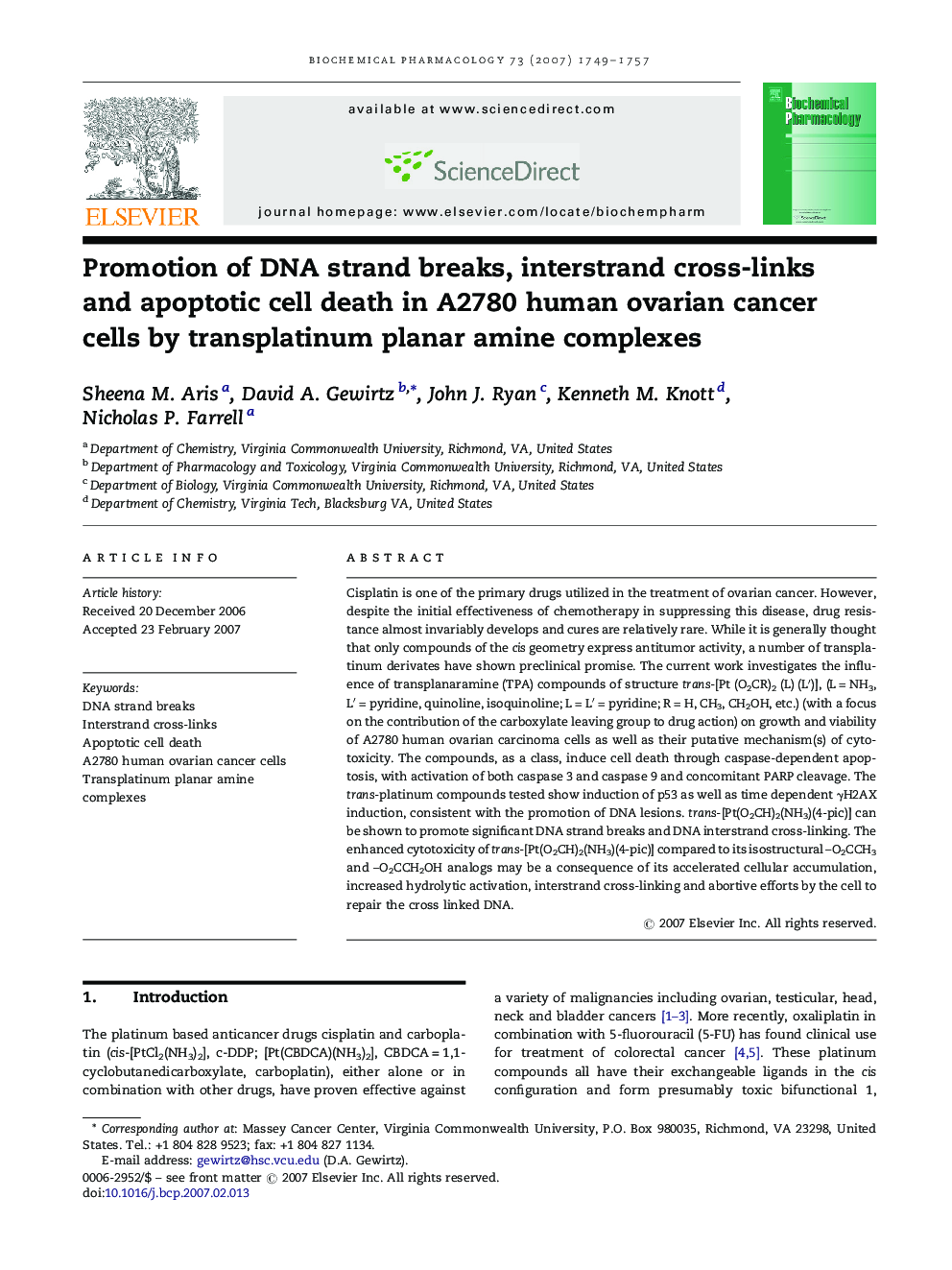| Article ID | Journal | Published Year | Pages | File Type |
|---|---|---|---|---|
| 2515603 | Biochemical Pharmacology | 2007 | 9 Pages |
Cisplatin is one of the primary drugs utilized in the treatment of ovarian cancer. However, despite the initial effectiveness of chemotherapy in suppressing this disease, drug resistance almost invariably develops and cures are relatively rare. While it is generally thought that only compounds of the cis geometry express antitumor activity, a number of transplatinum derivates have shown preclinical promise. The current work investigates the influence of transplanaramine (TPA) compounds of structure trans-[Pt (O2CR)2 (L) (L′)], (L = NH3, L′ = pyridine, quinoline, isoquinoline; L = L′ = pyridine; R = H, CH3, CH2OH, etc.) (with a focus on the contribution of the carboxylate leaving group to drug action) on growth and viability of A2780 human ovarian carcinoma cells as well as their putative mechanism(s) of cytotoxicity. The compounds, as a class, induce cell death through caspase-dependent apoptosis, with activation of both caspase 3 and caspase 9 and concomitant PARP cleavage. The trans-platinum compounds tested show induction of p53 as well as time dependent γH2AX induction, consistent with the promotion of DNA lesions. trans-[Pt(O2CH)2(NH3)(4-pic)] can be shown to promote significant DNA strand breaks and DNA interstrand cross-linking. The enhanced cytotoxicity of trans-[Pt(O2CH)2(NH3)(4-pic)] compared to its isostructural –O2CCH3 and –O2CCH2OH analogs may be a consequence of its accelerated cellular accumulation, increased hydrolytic activation, interstrand cross-linking and abortive efforts by the cell to repair the cross linked DNA.
